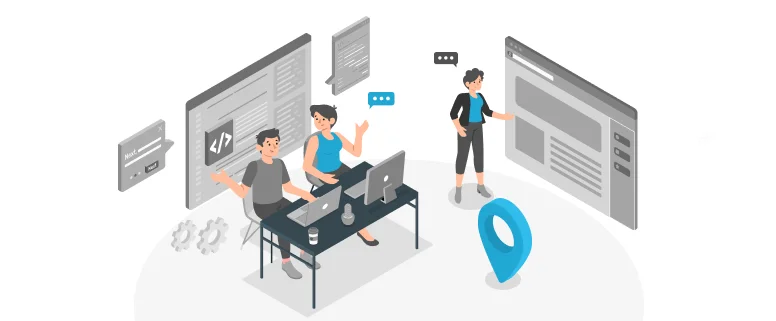E-commerce has become a trillion dollar industry, offering countless opportunities for the growth of your business. You can turn your website into an international chain of stores by translating your website. First of all you have to determine if you are ready to handle international clientele and orders. You need to know tricks of the trade, and keep in mind few simple tips to translate your website. These include:
1. Decide on a domain URL structure:
First of all you need to determine if you would want a country specific extension to your domain. For example, translated websites in Hong Kong with domain ending with .hk receive a higher percentage of traffic then .org.
2. Local Content Popularity:
You have to target the popular keywords according to a specific region. While some use Pvt Ltd for companies in US, others use GmbH in Germany. Thus you have to localize the use of content.
3. Translate texts on images:
There have been examples where the websites forget importance of translating image content on their websites. It is often possible that the image might be containing links, and should be translated to increase traffic.
4. Edit Meta Tags as per the Region:
One important step is to carefully translate the Meta tags of your website according to the specific country language.
5. Understand behavior of audience:
Another important thing is to analyze the trend of your audience by using Google Analytics. See which content gets more hits per region, and which pages receive most traffic according to each locality. Afterwards, adjust or regularly update more content to the page.
6. Use local sites for link building:
When doing marketing for your website, remember to use local website while submitting links. This is because popular local websites gives you more audience.
7. Don’t use complex content structure:
When writing your web content in English remember not to use a lot of idioms or include too many special characters in the content body. These can cause the automated translator to get confused and translate into words which will not make sense.
8. Keep it Short!
When writing multiple sentences, always separate by commas or full-stop. This makes it easier for automated translation services. Stretching sentences too long will obviously cause an automated program to be less efficient with translation.
9. Decide whether to go manual or automated?
Deciding which service to use for translation services is a crucial factor for the success of your website. While automated translation plugins normally work great with most of the languages, however; it has certain limitation when it comes to being 100% efficient with a particular language. Therefore, depending on the scope and importance of your content you need to decide whether automated service suits you better or the manual one.
10. Flash or Static Php, Html:
Another factor which plays an important role in success of your translated website is the language that you built your website in. Flash is now considered as an outdated language medium which is often unreadable by most of the search engines. This is why you should determine the code of your website, in order to check If an automated translator plugin will work with it or not.
Read Also: Three Principal Steps of Translation
11. Give a quick translation link in “Navigation”:
If you are planning to use a single domain for various countries, you should provide a dropdown menu for all offered languages in the navigation. This saves time to the audience and quickly captures their attention to easily navigate through different pages.
12. Translate documents:
It is common that you might be keeping certain documents on your website. These documents can either be in Word, or PDF format. Automated translator will not be able to translate these documents, so there is a need for you to make sure that each region gets the document in local languages. You can outsource the manual translation of these documents in order to save yourself time and loss of traffic.
13. Dedicated customer service:
When providing services in different regions, or running an online store, you will have to provide customer services as well. In order to do so, you will have to hire customer agents who are fluent with local language. You can outsource this to a translation team or hire someone yourself.
14. Using CMS and Coded Language:
When you paste in the text copied from word, or a CMS (content management system), you should remember to keep the source formatting, in order for translation software to work properly and for search engines to recognize your content. Otherwise, the Search Engine will not be able to index your website and would not include it in its records.
15. Check your spellings:
Last but not least, make sure that you proofread your content, and do not make spelling mistakes. A lot of websites often underestimate the importance of a professional content, and seldom commit spelling mistakes.
Although there are many modern automated translators providing services for numerous websites, however; they are often not accurate with their translations. It is always recommended to hire a professional translator as he will be able to understand your business strategy and advise you with popular local content phrases and taglines in order to increase your productivity.



